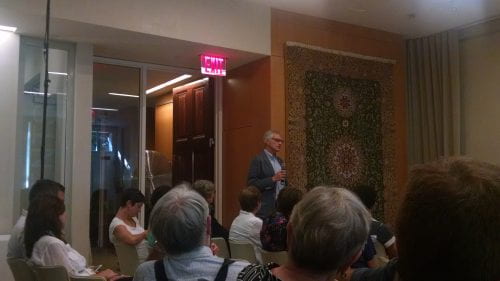Tag Social History
by contributing editor Carolyn Taratko “Vegetarianism is not only a question of the stomach but also one of society.” This may sound familiar to readers, as articles such as “Eat less meat to avoid dangerous global warming, scientists say” grace… Continue Reading →
by guest contributor Elizabeth Ott Debates about the proper function of public libraries—what readers they should serve, what kinds of reading they should promote, what sorts of books should stock their shelves and (perhaps most importantly) how those books and… Continue Reading →
by Madeline McMahon “Treasured Possessions from the Renaissance to the Enlightenment,” an exhibit at the Fitzwilliam Museum in Cambridge, folds the viewer into the fabric of life in early modern Europe. Street venders hawked their fare and pharmacists displayed their… Continue Reading →


